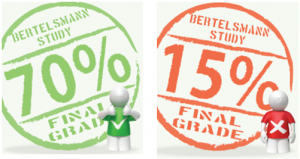The term 21st Century Learning is bandied about to the extent that we as teachers either view it as a catch phrase that we can pin a multitude of beneficial approaches to learning or in many cases attach the evils of what is going wrong in our laptop programs. It is time we get over that term, we are after all already 13 years into the century, and really start engaging in what the term and others like it (contemporary learning ) is really challenging teachers to do.
During the keynote speaker at this year’s Masterclass, there was a quote by researcher David Warlick that struck a particular chord with me.
“No generation in history has ever been so thoroughly prepared for the industrial age.” It is so true – every level of government in Australia is asking us to test many times in meaningless ways (as one presenter pointed out – an airline pilot is not required to do a multiple choice test – well at least I hope not), we still have classrooms set up in rows, students ask me continuously to just write the information on the board as that is how they learn best! Is it!!! REALLY!!! or is it that this is how they perceive they learn best – are they learning, are they thinking from this type of instruction. Why do joeys boys feel such a pressure to get the right answer from the teacher and then feed it back to me in a variety of tasks – often not requiring a lot of analysis, thought or creativity. External exam, an unwillingness to go out on a limb and think for themselves, its safe (at the moment), they know they can achieve great grades this way but are we preparing them for life and employment beyond joeys.
Yet I go to conferences, I read a lot and most of what I read says that we should be fostering a love of learning (let’s face it as Lisa Simpson said in one episode – why should I study when I can find the answer on Google in 6seconds) . There’s a gap here and one that frightens me a lot. Ian Jukes from the Fluency project ( http://fluency21.com/ ) threw down the gauntlet to change not for change sake but as an economic imperative. Think of the jobs going from Holden, Factories whole stream of blue collar jobs disappearing. now is it is the turn of the more white collar jobs – tax returns, routine medical scans are all being outsourced to foreign lands. He mentioned a site that Odesk ( https://www.odesk.com) Where you can hire administrative support, web developers, creative artists, writers, translators and the list goes on. Post a job and you have hundreds of applicants in 30 minutes. Even the potential of 3 D printer means that the worlds leading surgeons can now be brought in to consult into any hospital in the world. Science fiction? – NO It’s Happening. With Odesk you can pay the perosn through the system, montior their workflow (so you KNOW they are doing the work etc).
Wonderful Opportunities but also so very very challenging for our economies, our students in the not too distant future.
Does this mean we give up explicit instruction – NO, does this mean that we do away with the teacher as central to the learnign process NO. but it MUST have implications on the way we teach and it is time we all think about what learning needs to take place, how we enrich the learnign experience, what are the values of a life long learner that we need to impart and empower our students so that they too can be part of the solution that the changes in society is currently throwing us.


